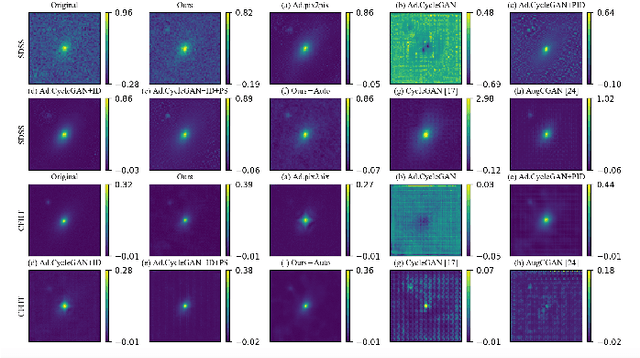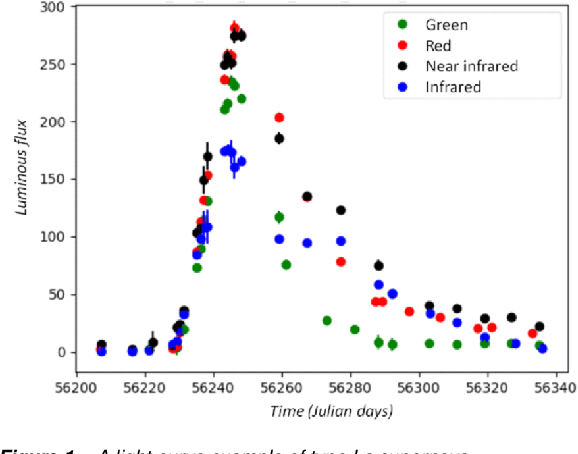Jérôme Pasquet
Galaxy Image Translation with Semi-supervised Noise-reconstructed Generative Adversarial Networks
Jan 19, 2021



Abstract:Image-to-image translation with Deep Learning neural networks, particularly with Generative Adversarial Networks (GANs), is one of the most powerful methods for simulating astronomical images. However, current work is limited to utilizing paired images with supervised translation, and there has been rare discussion on reconstructing noise background that encodes instrumental and observational effects. These limitations might be harmful for subsequent scientific applications in astrophysics. Therefore, we aim to develop methods for using unpaired images and preserving noise characteristics in image translation. In this work, we propose a two-way image translation model using GANs that exploits both paired and unpaired images in a semi-supervised manner, and introduce a noise emulating module that is able to learn and reconstruct noise characterized by high-frequency features. By experimenting on multi-band galaxy images from the Sloan Digital Sky Survey (SDSS) and the Canada France Hawaii Telescope Legacy Survey (CFHT), we show that our method recovers global and local properties effectively and outperforms benchmark image translation models. To our best knowledge, this work is the first attempt to apply semi-supervised methods and noise reconstruction techniques in astrophysical studies.
A CNN adapted to time series for the classification of Supernovae
Jan 02, 2019



Abstract:Cosmologists are facing the problem of the analysis of a huge quantity of data when observing the sky. The methods used in cosmology are, for the most of them, relying on astrophysical models, and thus, for the classification, they usually use a machine learning approach in two-steps, which consists in, first, extracting features, and second, using a classifier. In this paper, we are specifically studying the supernovae phenomenon and especially the binary classification "I.a supernovae versus not-I.a supernovae". We present two Convolutional Neural Networks (CNNs) defeating the current state-of-the-art. The first one is adapted to time series and thus to the treatment of supernovae light-curves. The second one is based on a Siamese CNN and is suited to the nature of data, i.e. their sparsity and their weak quantity (small learning database).
 Add to Chrome
Add to Chrome Add to Firefox
Add to Firefox Add to Edge
Add to Edge